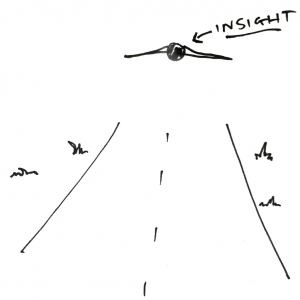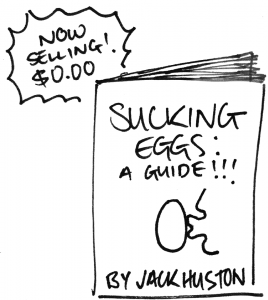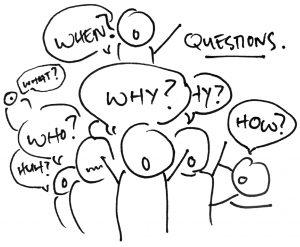Ensuring research lands (Part 1) - Understanding the context in which it will land.
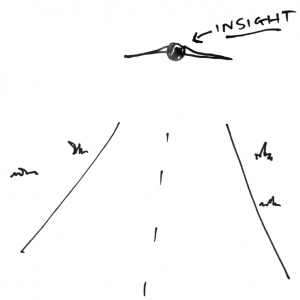
We help organisations to do research. We uncover new insight into their customers’ experiences, and into the way their organisation works. Ultimately, ensuring your research and insight lands in a way that makes the work successful and useable, comes down to how it is received by those who’ll use it.
Valuable research is insight that lands well. To begin with, understanding what the organisation knows already will clear a runway for your insight.
There is a wealth of organisational knowledge that doesn’t exist anywhere, except for inside the heads of individuals in an organisation. If you don’t reach into this latent knowledge first, you risk telling people what they already know, without asking them. This can lower the perceived value of human-centred, design-led research, and guarantee the next time you try to be human-centred you won’t be getting that budget you got last time.
The hard part of this is that people in your organisation often won't know what information might be applicable. It is important to make it easy to get out of people’s heads, and validate the knowledge inside your organisation; because, if you’re working inside a large and complex organisation, there is an incredible amount of it.
Make sense of what is buried in disparate reports: Organise the known knowns.
This is always easier with examples: I’ve just been imbedded into a large national organisation, helping a team kick-off a lengthy phase of research, before undertaking a multi-year transformation. This is one of those organisations where people have been around for decades. The latent knowledge is broad and deep. There is a high risk of the research report being renamed: “Sucking-Eggs: A Guide”.
To begin with, we poured through the existing research, which was actually fantastic, but they had the classic problem: it existed in 15 or so different documents, scattered among different silos, used for old projects.
That which exists in a report, as a PDF, on a computer, in a data base, is often perceived to be unchangeable and will see little reuse. It’s a PDF: it’s un-editable. Data deserves to be dynamic. We worked with our client to synthesise the 15 or so different reports into about 8 square meters of rich, valuable and manipulable data, plastering our wall with the known knowns.
We started simply, by pulling out relevant “tidbits” of information and affinity-diagramming these on post-its, pictures, sketches, and scraps of paper. Maintaining the integrity of this data in the process is hard, but essential (I recommend developing some sort of quick coding system). This will often end up as something that is consumable at a glance, and is able to be drilled down into for deeper and deeper detail, taking the form of a concept diagram, or in our case, a skeleton journey map.
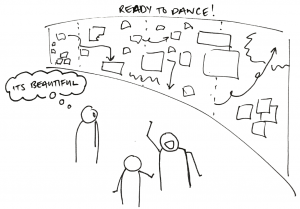
All lo-fi. All paper. All ready to be shuffled, shaped, changed, and changed again. What we know about qualitative research for design is that it’s crucial to be iterative. To start, we make the known knowns explicit, external, easy to consume, and easy to add to. There were, and always will be, gaps. Next!
Make latent knowledge explicit across silos: Augment Known Knowns with Unknown Knowns.
After getting what we needed to up on the walls in a form we could dance with, we invited groups of individuals who represented a cross-section of the organisation to visit our wall (try to include at least one, preferably two, persons who have interactions with your customers) This has a lot of purposes:
- Sharing early and often mitigates the risks involved with the ta-da moment.
- The previous work we’d done acted as a provocation, drawing out the information that will come to sit in the aforementioned gaps.
- Large organisations run on networks of people, often social, and at times political. Exposing small groups at a time gives us the chance to tap into those networks and ask: “Who would know the answer to this?”, or; “Who’s controlling the other end of that?”. Then, you invite those people to the next wall visit.
- The people you’re inviting; these should be the people whom your research will impact down the track. This will go towards ensuring your research is useful for them.
- People will learn more about their organisation, and start making improvements.
- If run correctly, these sessions will start to generate a buzz around the work you’re doing. We had one of these sessions go so well the executive board caught wind of it, so we had them on board from pretty early on.
In these sessions, the goal is to use the existing research to generate meaningful conversation, and then synthesise that new content back into the existing research.
This time we had the groups create miniature versions of our skeleton journey map, based on their understandings of the organisation and the customer, and then take each others maps, and transplant these into our larger ‘master map’. This worked well, as we had people asking each other for help in understanding their own maps, and debating where something belonged. At the same time, they’re consuming the master map, learning, critiquing, and adding depth. These sessions lasted about 2 hours each and had 6-8 people in each.
Collect questions from across the organisation: What are our known unknowns?
Okay, okay. Those sessions have another benefit. Questions! Yes, your participants will have answers, but at the same time they’ll have questions: “Why does it go that way?”; “Why on earth are we trying to do THAT for customers?”; “Who on earth values this feature?”. Same as the answers you seek that exist across an organisation, questions (in other words, things that we know we don’t know) are an important source of information and a kick start to your research.
Record these questions. Work to understand why they’re important to know the answers to. “Why do you want to know that?” “What value does that have for you in you role?” This is an informal way of starting to write your research protocol and discussion guides later on. After these sessions, or in between, you might start to collect these questions more formally.
Internal surveys are a good way to reach a lot of people really quickly, but if you know the people (and you do because you’ve run a few of those sessions) you can follow up in person. For someone in a position of power (exec, snr managers etc.), to admit they don’t know something is putting them in a vulnerable position. This is tough for people to feel they have the permission to do so in front of their peers, and definitely their superiors. We like to use the method of brain writing, or anonymous collection, for these. Make sure you’re collecting where these came from. Work to understand why they want to know something, and what significance it has in their day to day work.
Take the questions and get to the bottom of them. Look for patterns and themes, the same as how you would when with generating insights; look beyond the actual question, through to the intent. What do these people want to know, what do they want to do with it? Why? And remember, if you’re building a full picture (and I encourage you to do so) that’s only half.
Really successful customer research requires so much more than a great interview. We’ll follow this up with (Part 2) - Taking others on the research journey.

